Sendai Castle (Aoba Castle) 仙台城跡
|
|
|

JR Sendai Station on the west side (Nishi-guchi). This is the main side. There is a tourist information office inside the station where you can pick up maps and pamphlets, maybe in English too.
|
|

Inside Sendai Station, heading to train platforms.
|
|
|

Trains in Tohoku have a door open/close button to save on air-conditioning or heating.
|
|

Morning rush hour at Sendai Station. People heading for the exit inside Sendai Station.
|
|

Outside Sendai Station, they are constructing the Tozai subway line due to open in 2015.
|
|

Poster for the new Tozai subway line in Sendai to open in 2015.
|
|

Subway stations on the existing subway line in Sendai.
|
|

Kotodai Koen subway station in Sendai. Modern and clean subway.
|
|

Subway train in Sendai.
|
|

Inside Sendai subway train.
|
|

Sendai subway station
|
|

On escalators in Sendai, they stand on the right side. (Not on the left side as in Tokyo.)
|
|

Bus stop outside Sendai Station.
|
|

Sendai City Loop bus goes to the major tourist spots in Sendai. Most convenient to get to Sendai Castle. 250 yen per ride or 600 yen for a day pass.
|
|

Route of the Sendai Loop bus. Get off at Sendai-joshi to see Sendai Castle. The bus will take you all the way to the top of the hill where the castle is. Much easier than walking up.
|
|
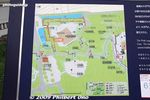
Map of Sendai Castle site. It's quite a large site, with museums and other facilities occupying the former castle site. The Honmaru (partially hidden) is on the right of the map.
|
|

Site of Nenomon Gate. This leads to Sendai City Museum in the castle area called Sannomaru. 子門
|
|

Goshikunuma Swamp is a moat of Sannomaru.
|
|

Sculpture in Sannomaru.
|
|

Stone wall at the site of Otemon Gate.
|
|

Waki-yagura turret at the site of Otemon Gate.
|
|

Sendai Castle's Waki-yagura turret at the site of Otemon Gate. Reconstructed in 1965. We cannot enter it. 脇櫓
|
|
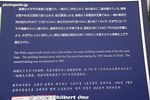
About the Waki-yagura turret.
|
|

The original Otemon Gate was here, between the Waki-yagura on the right and stone wall on the left.
|
|
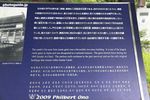
About the Otemon Gate.
|
|
|

Waki-yagura turret at Sendai Castle.
|
|

Statue of Hasekura Tsunenaga acros the road from the Waki-yagura.
|
|

Statue of Hasekura Tsunenaga, a samurai retainer of Date Masamune who sent him to the Vatican in 1613. 支倉常長
|
|

As you climb up the Aobayama, you pass through the sites of former gates. This one was Nakanomon Gate. 中門
|
|

Climb further and you'll reach large stone walls, called the Honmaru northern stone wall.
|
|

Corner of Honmaru northern stone wall.
|
|
|
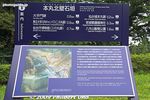
The area has these nice multi-lingual plaques explaining the points of interest with a map included.
|
|
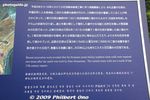
About the Honmaru northern stone wall.
|
|

Honmaru northern stone wall.
|
|

Next to the Honmaru northern stone wall is this large torii gate and steps going up to the Honmaru, the castle's central keep. This place in front of the torii was a parking lot before. Glad that parking is no longer allowed here.
|
|

Sendai Castle site's torii. The torii is here because there's a Shinto shrine in Honmaru.
|
|
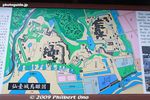
Map of the original Sendai Castle also called Aobajo or Aoba Castle since the castle is on Aobayama or Mt. Aoba. Sumo fans might know the name Aobajo, a sumo wrestler from Sendai active in the 1980s.
|
|

Honmaru is a large flat area overlooking central Sendai. This was where the castle palace was, the castle lord's actual residence.
|
|

Lookout point on Sendai Castle's Honmaru.
|
|

View from Sendai Castle's Honmaru. Sendai has over a million people. On clear days, you can also see the Pacific Ocean.
|
|

View from Sendai Castle's Honmaru.
|
|

Sendai Castle's Honmaru.
|
|

View from Sendai Castle's Honmaru.
|
|

From the city, this is what the castle site looks like on Aobayama. You can see the lookout deck.
|
|

Waki-yagura as seen from afar.
|
|

Statue of Lord Date Masamune at Sendai Castle's Honmaru. Very popular for picture-taking.
|
|

Statue of Lord Date Masamune at Sendai Castle's Honmaru. One of the most popular and famous samurai of all time.
|
|

Statue of Lord Date Masamune at Sendai Castle's Honmaru.
|
|

If you look closely, you can that see one of his eyes is blind.
|
|

Sample stone work on a castle wall.
|
|

These are original Edo Period stones removed when the stone wall was renovated. These stones could not be reused.
|
|

Sample stone work on a castle wall.
|
|

Triangular stones are used.
|
|
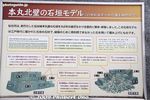
About the sample stone walls.
|
|

Sendai Castle marker
|
|

Monument for the war dead.
|
|

Monument for Doi (Tsuchii) Bansui who created the song, "Kōjō no tsuki" (荒城の月 lit. "Moonlit castle ruins") which is about Sendai Castle. 土井 晩翠
|
|

Also in the Honmaru area is Gokoku Shrine decorated here during the Tanabata Star Festival in early Aug. 宮城縣護國神社
|
|

Miyagi-ken Gokoku Shrine enshrines Miyagi Prefecture's war dead since 1868. There are over 56,000 war dead.
|
|

Miyagi-ken Gokoku Shrine in Sendai Castle. Emperor Hirohito as well as Crown Prince Akihito (current emperor) visited this shrine to pay their respects. 宮城縣護國神社
|
|

Kamikaze suicide fighter pilot memorial next to a war museum within the shrine.
|
|

Votive tablets for sale at Gokoku Shrine. Special tanabata ones during early Aug.
|
|
|

Lucky Alex...
|
|

Small museum in Honmaru showing results of excavation work and stone wall reconstruction.
|
|

Sendai International Center
|
|

Hirose River, teeming with wildlife.
|
|

Street lamp
|
|

City of trees on a main road in Sendai.
|
|
|
|